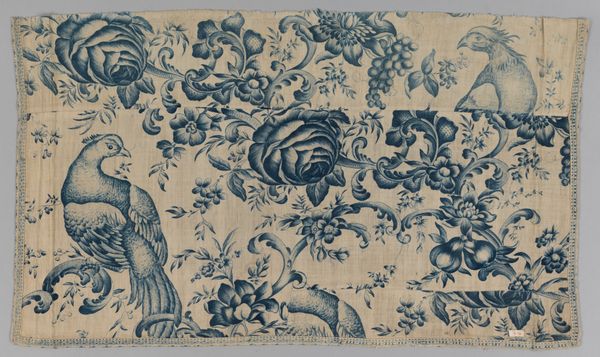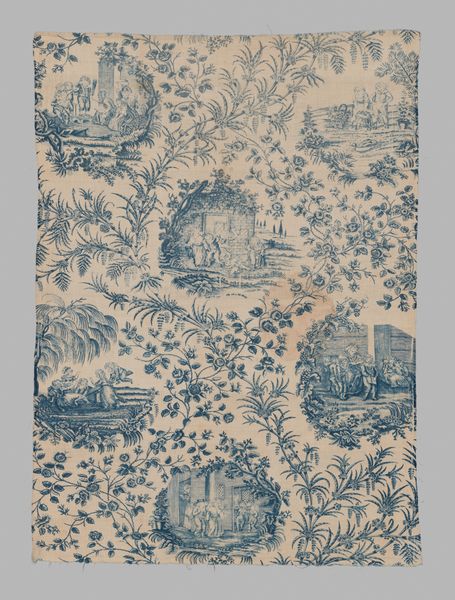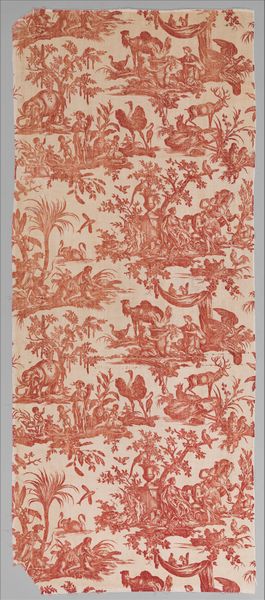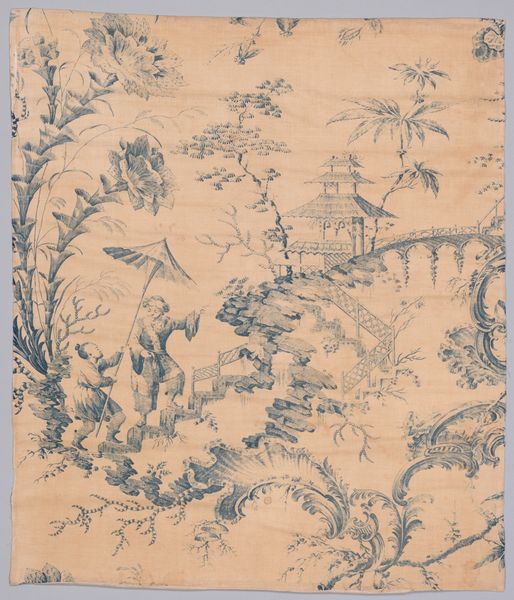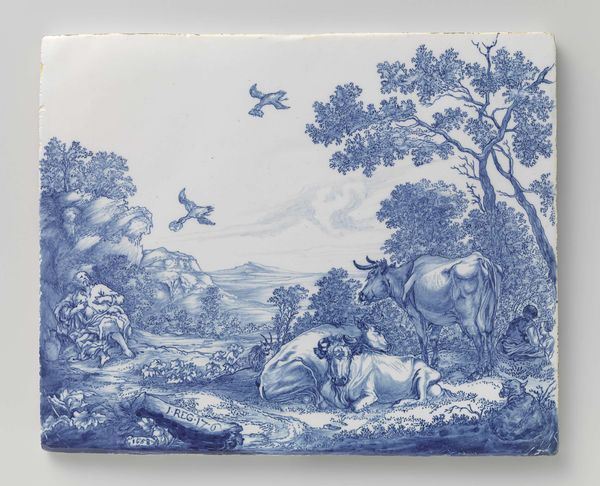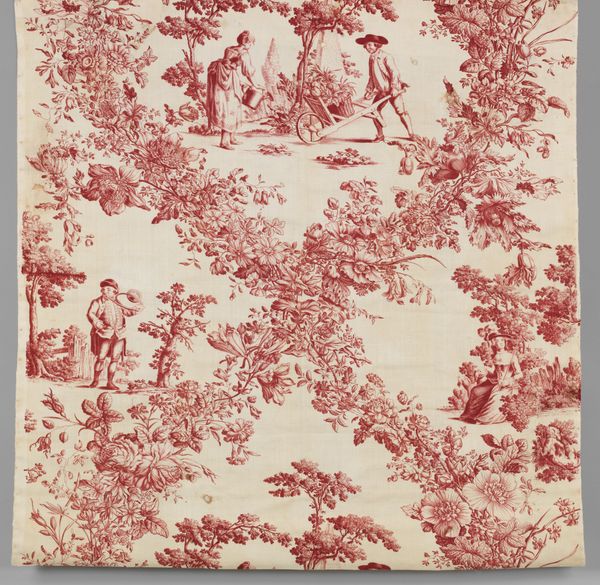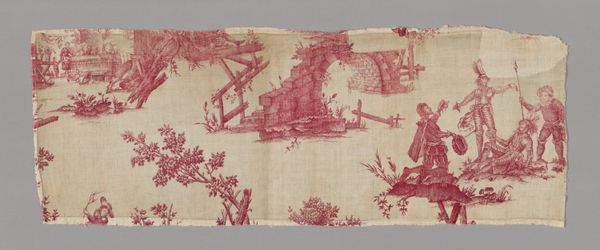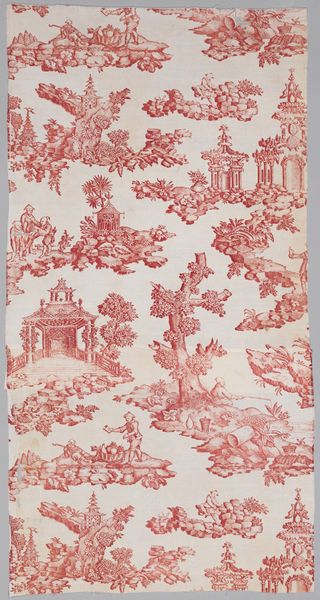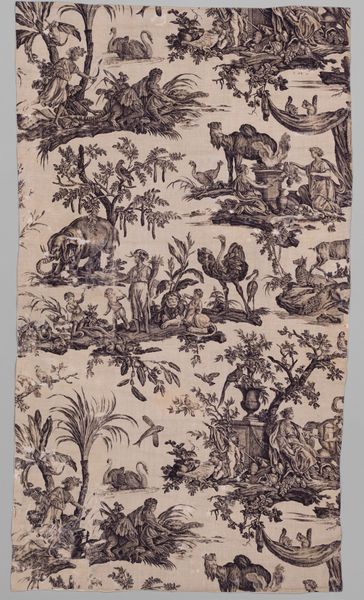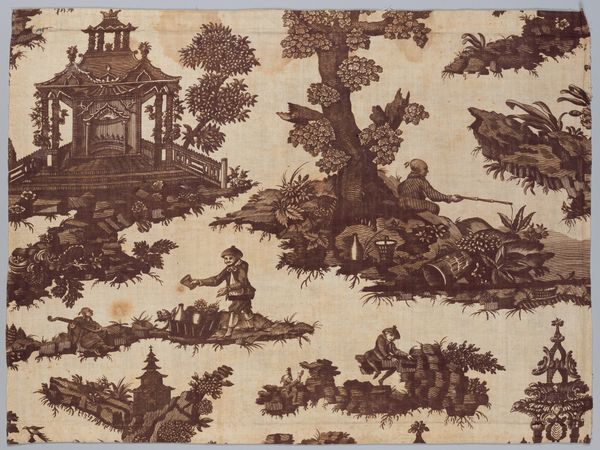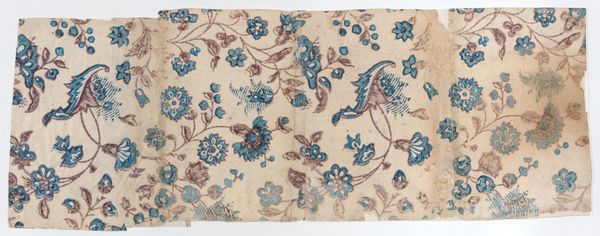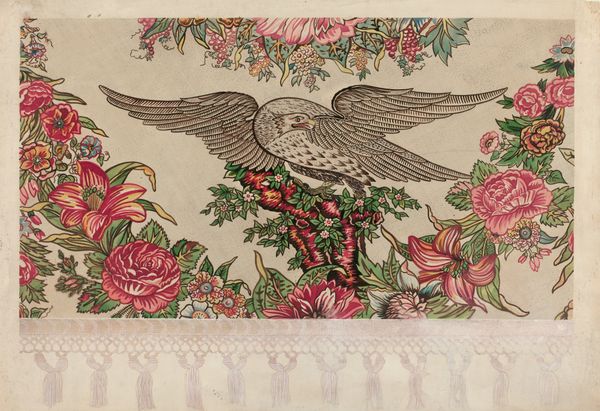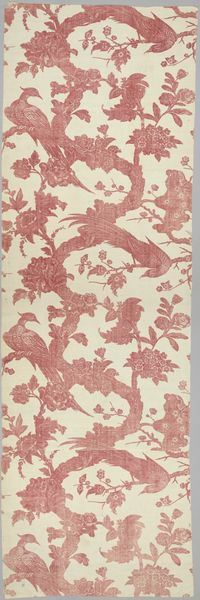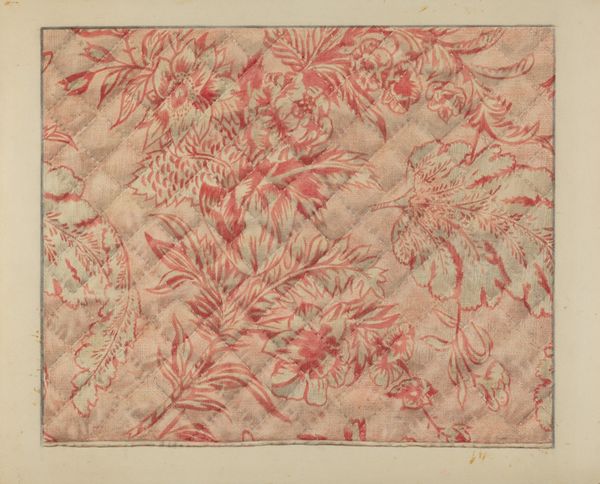
print, textile, woodblock-print, sculpture
# print
#
landscape
#
textile
#
coloured pencil
#
woodblock-print
#
sculpture
#
sketchbook drawing
#
genre-painting
#
decorative-art
Dimensions: L. 17 x W. 15 inches 43.2 x 38.1 cm
Copyright: Public Domain
Editor: Here we have "Piece" made between 1765 and 1775, and credited to Nixon & Co. It's currently housed at the Metropolitan Museum of Art. Looking at it, the delicate blue print on the textile really evokes a sense of pastoral elegance. What do you see in this piece? Curator: The choice of peacocks immediately draws my eye. Beyond their simple beauty, what do peacocks often represent? Think about cultures throughout history. Editor: Luxury and vanity? I think they’re associated with royalty and maybe pride. Curator: Exactly. The peacock, in many Western and Eastern cultures, symbolizes pride, beauty, and immortality. Notice how Nixon & Co. hasn’t simply rendered them realistically. They’ve imbued them with a certain grandeur, a sense of self-assuredness, almost challenging the viewer. Do you think that connection to luxury or royalty resonates with the time it was produced? Editor: Well, definitely. That era was known for its aristocratic love of ornate designs. Was this fabric maybe used for someone important? Curator: Quite possibly! This wasn't mere decoration, but a visual statement of status and refined taste. The idyllic landscape behind them further suggests an ordered, cultivated world, which was very fashionable then. Can you imagine how it would be seen on walls, perhaps on furniture? It's really a story told through imagery. Editor: It’s amazing how a single piece of fabric can be so loaded with meaning. I’ll never look at peacocks the same way! Curator: Precisely. Visual symbols speak volumes. They’re echoes of the past, constantly reshaped by the present.
Comments
No comments
Be the first to comment and join the conversation on the ultimate creative platform.
